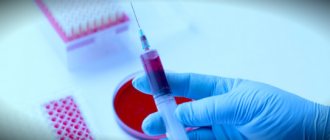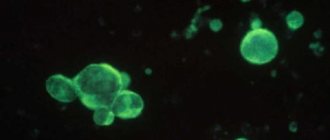Some patients undergo testing and receive a false positive result for syphilis.
This means that, according to laboratory diagnostics, this infection is present in the body, although in fact it is not.
The reason for this is that in most cases, syphilis is detected by indirect methods.
That is, it is not the bacteria themselves that are detected, but signs of their presence in the body.
These are antibodies to Treponema pallidum or the body's own antigens, which are released from destroyed cells.
At the moment, there are no serological tests with 100% specificity.
That is, those in which false-positive syphilis can never be diagnosed.
All studies produce a certain percentage of incorrect results.
Let's look at the main situations and reasons when this happens.
Types of false reactions to syphilis
There are acute and chronic false-positive results.
Those that spontaneously become negative within 6 months are considered acute.
Chronic ones can remain positive for a long time.
Including throughout life.
More often such reactions are observed in women.
In male patients this occurs 3 times less often.
Some authors consider this difference to be even greater.
There is information in the literature that false positive reactions to syphilitic infection are detected 4.5 times more often in women.
The frequency of these results depends on:
- the contingent among whom the survey is being conducted;
- techniques used to diagnose syphilitic infection;
- duration of infection and period of infectious disease.
False-positive results when performing treponemal tests are found in 0.03-2.3% of cases.
When using non-treponemal studies, their frequency is even higher.
It ranges from 5 to 20%.
Interpretation of a blood test for syphilis
The results of the study, depending on the chosen method, can be presented in different forms (pros and cons, numbers, etc.). But in general, the breakdown of the test for syphilis, regardless of the type of procedure, is as follows:
- The result is negative - no treponemes are observed in the blood.
- The result is weakly positive (doubtful) - a certain amount of the pathogen is present in the blood, but an accurate diagnosis cannot be made.
- The result is positive - syphilis develops in the body.
In some cases, the result may be a false negative or a false positive.
Reasons for a false negative test for syphilis
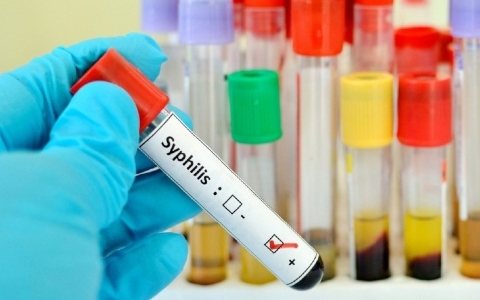
A false negative test for syphilis may occur if it was performed too early and treponemes are not yet detected in the blood serum. That is why, if we are not talking about an ELISA test, it is better to undergo the procedure 1.5 months after the alleged infection. If the patient has had questionable sexual contact and the test result is negative, a repeat test is recommended after some time.
Also, a false positive result occurs when the analysis is carried out incorrectly. Or when using express methods for detecting syphilis.
False positive test for syphilis
False-positive tests for syphilis can be in the following cases:
- during menstruation;
- with a recent myocardial infarction;
- for autoimmune diseases;
- for infections (chickenpox, hepatitis, HIV, influenza, acute respiratory infections);
- for liver pathologies;
- for oncological diseases;
- for tuberculosis;
- for pathologies;
- during pregnancy.
Sometimes an incorrect result is obtained after a recent vaccination. That is why, having received a positive test for syphilis, you should not get upset ahead of time, but should undergo additional research.
Causes of false positive reactions to syphilis
All reasons are divided into three groups:
1. Infections.
The causative agents of a number of infectious diseases are similar in antigenic structure to the pale spirochete.
Therefore, the antibodies produced interact with antigens used in the laboratory diagnostic process.
First of all, these are tropical diseases caused by treponemes of other species.
Some other bacteria can also provoke false-positive reactions to syphilis.
These include:
- yaws;
- bejel;
- relapsing fever;
- pint;
- Lyme disease;
- leptospirosis.
Sometimes saprophytic flora provokes positive reactions.
That is, microorganisms that do not cause any diseases at all.
They can live both on the genitals and in the mouth.
Among these microorganisms are saprophytic spirochetes.
Sometimes false positive results occur even with infectious pathologies, the pathogens of which are completely different from Treponema pallidum.
Among them:
- herpes;
- enterovirus;
- cytomegalovirus;
- chlamydia;
- viral hepatitis;
- measles;
- "piggy";
- tuberculosis;
- flu;
- bacterial pneumonia.
2. Non-communicable diseases and conditions.
They cause metabolic disorders.
Such diseases include:
- broken bones and other injuries;
- oncological processes;
- myocardial infarction;
- stomach ulcer;
- Chronical bronchitis;
- inflammatory diseases of the pelvic organs;
- jades;
- intoxication;
- coagulopathies;
- gout;
- hematological diseases;
- HIV (early stage).
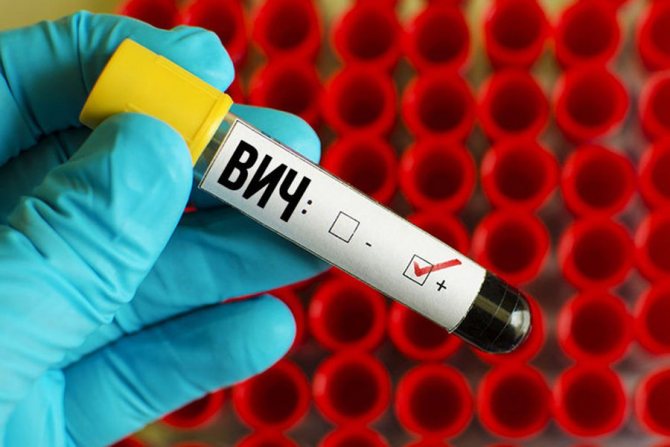
They can cause both acute and chronic false-positive reactions.
This group of reasons includes the following conditions:
- vaccination;
- menstruation;
- abuse of fatty foods;
- starvation;
- protein deficiency (for example, vegetarianism);
- blood transfusions;
- alcohol intoxication;
- drug use;
- pregnancy.
3. Errors during research.
For example, low-quality consumables were used during the test.
Or the laboratory technician mixed up your blood with the biomaterial of another patient.
All errors are divided into two groups:
- technical;
- semantic.
The first group includes those that are associated with unsatisfactory quality of equipment or ingredients.
The reason may be:
- manufacturing defects;
- poor laboratory conditions;
- violation of shelf life of ingredients, etc.
The second group includes errors caused by insufficient competence of medical staff.
This is either a violation of the laboratory test methodology or an incorrect interpretation of the results.
What are false positive reactions to syphilis?
False-positive reactions seroreactions to syphilis are positive results of tests for syphilis in the absence of the disease. False-positive reactions must be distinguished from seropositivity and seroresistance after treatment of syphilis. In most cases, false-positive reactions occur when performing non-treponemal tests for syphilis (RPR) - approximately 2-5% of all tests performed (according to some authors, from 5 to 20%), false-positive reactions are much less common when conducting treponemal tests. A distinction is made between biological false-positive reactions and erroneous false-positive reactions associated with violations of the testing technique in the laboratory.
False-positive syphilis during pregnancy
Very often, false test results occur in pregnant women.

Moreover, the closer to childbirth, the higher the likelihood that the patient will be mistakenly diagnosed with syphilis.
In the third trimester, positive reactions in the absence of a real syphilitic infection are harbingers of labor.
Not only non-treponemal tests can be positive, but also:
- REEF;
- immunoblot;
- RSK;
- RPGA.
With the greatest frequency, false-positive test results for syphilis are observed in women during the following periods:
- last 2 weeks before childbirth;
- the first 3 weeks after the birth of the child.
False-positive reactions are possible without any somatic pathologies, even with uncomplicated pregnancy.
Most often they become negative soon after childbirth or abortion.
But they can remain positive for a long time after the birth of a child in some patients.
If a pregnant or recently given birth woman tests positive for syphilis, the doctor must understand that it is highly likely to be false.
Therefore, syphilitic infection cannot be considered confirmed.
Treatment is not prescribed until the doctor is sure of the diagnosis.
The presence of corresponding clinical symptoms may speak in favor of existing syphilis.
But in any case, this disease requires confirmation.
More research is needed to determine whether a pregnant woman actually has a syphilitic infection.
It is important to do this before birth to prevent possible infection of the baby.
At the same time, it is also impossible to prescribe treatment for an unconfirmed diagnosis.
Because antibiotic therapy increases the risk of complications that occur during gestation.
When is a test for syphilis prescribed?
A test for syphilis can be prescribed for three purposes:
- To prevent the spread of the disease among the population.
- If the patient suspects the possibility of infection.
- If you have symptoms of syphilis.
For the purpose of prevention, a blood test for syphilis is prescribed:
- people who want to be donors;
- when applying for a job in children's and medical institutions;
- when a patient is admitted to a hospital or before surgery;
- when planning to conceive or during pregnancy.
The patient himself may suspect the possibility of contracting syphilis after sexual intercourse with a dubious partner or a person with syphilis. In this case, he is concerned about the question “how long before he should be tested for syphilis?” Modern methods make it possible to detect treponema approximately 3-4 weeks after infection. However, for the greatest reliability of the results, it is recommended to undergo the study approximately 1.5 months after the probable infection.
A test for syphilis is indicated if the following symptoms are present:
- rashes in the area of the external genitalia, which are accompanied by pathological discharge from the genital tract;
- swollen lymph nodes;
- rashes on mucous membranes;
- aching bones;
- febrile conditions.
They should under no circumstances be ignored. Some patients do not undergo the study due to reluctance to disclose their suspicions. In this case, you can get tested for syphilis anonymously.
Diagnosis of false-positive syphilis
The doctor's task is to distinguish a syphilitic infection from a false positive reaction.
To do this you need:
- assess for symptoms;
- confirm the presence of the pallidum spirochete using direct detection methods (if possible);
- do other serological tests.
Initially, the diagnosis of syphilitic infection is not made if there is only one positive test.
A minimum of two laboratory tests are required.
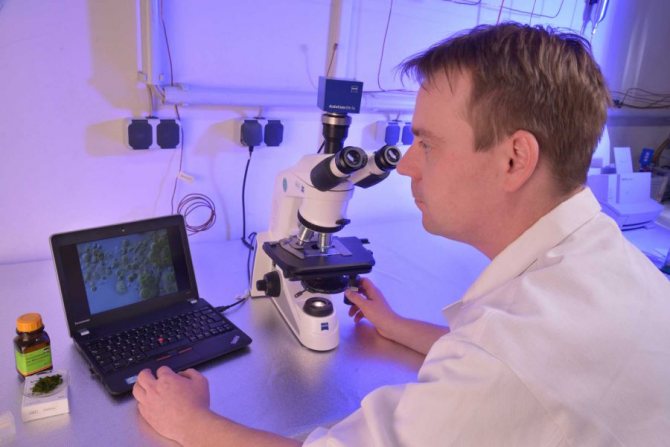
If both are positive, the diagnosis is confirmed.
If the tests are conflicting, additional examination is required.
Ideally, it is advisable to identify the causative agent of syphilis using one of the following methods:
- dark field microscopy;
- PCR confirms the presence of pale spirochete DNA.
To do this, it is necessary to take biomaterial from the place where the bacterium is supposed to be localized.
In the primary period of the disease, this is primary syphiloma or lymph node puncture.
In the secondary – elements of a rash.
In the tertiary period, it is rarely possible to identify the pathogen directly.
It is found in gummas and tubercles in minimal concentration.
In the absence of symptoms, only indirect methods can be used for diagnosis.
In this case, additional serological tests are performed.
Arguments that speak in favor of the presence of a syphilitic infection:
- high antibody titers;
- an increase in their titer over time;
- retention of positive tests after 6 months of observation;
- the appearance of symptoms of syphilis;
- medical history (contact with a source of infection);
- exclusion of diseases that may cause false-positive reactions.
False results are indicated by:
- low titers;
- presence of concomitant pathology;
- decrease in antibody titer over time;
- their disappearance several months later;
- no symptoms of syphilis;
- conflicting results of the same study if the reaction is performed with different sets of antigens.
Is a false positive test transmitted?
As you know, syphilis is a contagious disease.
This infection is definitely transmitted from person to person.
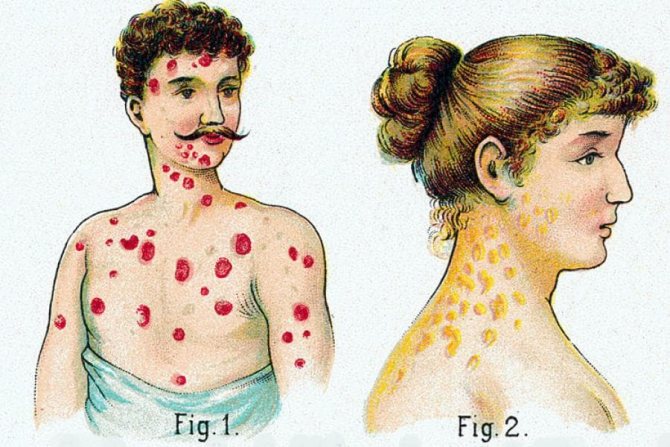
Some patients fear that a false-positive test can be transmitted through sexual intercourse.
This happens, although very rarely.
We have already looked at the main reasons for false positive tests.
One of the groups of etiological factors is infectious diseases.
Including those that are transmitted during sex.
These are tropical treponematoses, herpes, chlamydia, mycoplasmosis.
When infected with these infections after a certain period of time, a person may actually develop false-positive reactions to syphilis.
So, with some stretch, we can say that they are transmitted.
This stretch lies in the fact that not every case of infection, for example, with herpes, will lead to tests for a syphilitic infection becoming positive.
Such incidents are observed only in individual patients, and not in everyone who has become infected with these pathologies.
When do false positive reactions to syphilis occur?
The reported frequency of false-positive results of non-treponemal tests ranges from 5 to 20%, according to various authors.
Main causes of false-positive results of non-treponemal tests
The most common cause of biological false-positive non-treponemal tests is antiphospholipid syndrome (Hughes syndrome) - an autoimmune process most often found in collagenoses (connective tissue diseases) - systemic lupus erythematosus (2.7% - 3.5%), dermatomyositis, scleroderma.
Among other causes, the most common are Oncological diseases (for example, lymphoma up to 10%) Tuberculosis, especially extrapulmonary forms (up to 3%) Enteroviral infections Infectious mononucleosis Viral hepatitis Lyme disease (borreliosis) Pneumonia Alcoholism and drug addiction Some skin diseases (for example, psoriasis up to 1.1% ) Recently (up to 2-3 weeks) vaccination Infections - malaria, chicken pox, measles Endo and myocarditis Diabetes mellitus (especially against the background of parenteral insulin compensation) Gout Age over 70 years.
| If the results of non-treponemal tests are positive, a mandatory clinical examination by a venereologist and treponemal tests are performed - passive hemagglutination reactions (TPHA) and immunofluorescence reactions (RIF) |
What to do in case of false positive reactions?
When a person’s diagnosis of a syphilitic infection is not confirmed in subsequent tests, this causes him joy and relief.
Most thank the doctor and go home, forgetting about hospitals and examinations for a long time.
But this approach is wrong.
After all, if a patient has false negative test results, this means that he is highly likely to have certain diseases.
In healthy and non-pregnant people, positive reactions in the absence of syphilis are rare.
Therefore, it is advisable to be examined to find out the cause.
Often such patients have systemic connective tissue diseases, tumors or infections.
Therefore, it is advisable to be examined for STDs, undergo general clinical tests, and undergo cancer screening.
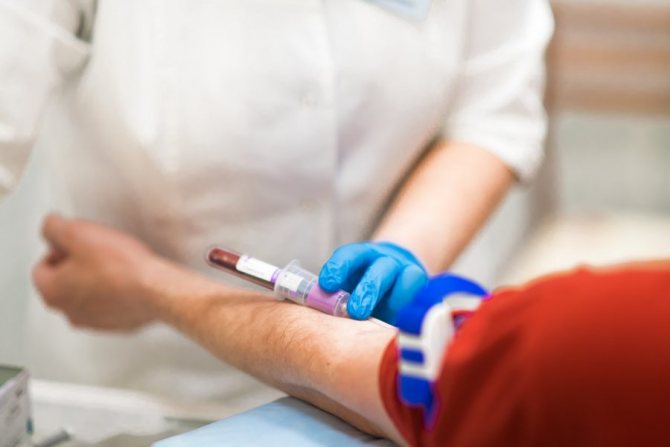
The doctor decides what kind of research is needed.
In doing so, he is guided by the presenting symptoms, anamnestic data and the results of general clinical laboratory tests.
Reactions after suffering from syphilis
Only those reactions that are registered in humans are considered false positive:
- not suffering from syphilis;
- have never been infected with this disease in the past.
If a person has ever had syphilis, he may have a positive test result even after he has completed a course of therapy and got rid of this disease.
But such reactions are no longer considered false positives.
This phenomenon is called seroresistance.
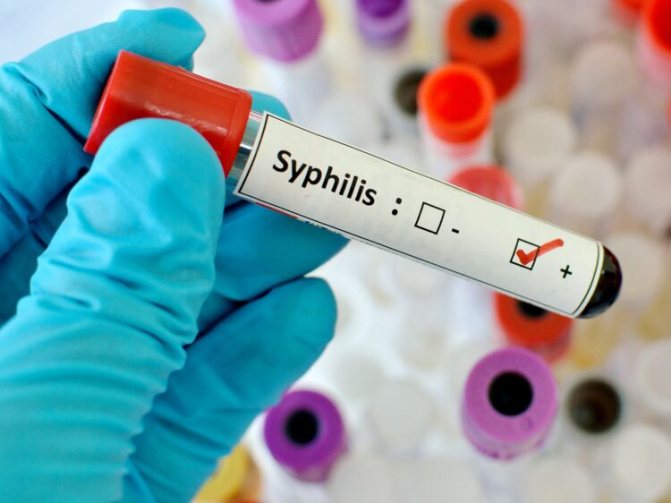
It is stated if:
- reactions remain positive for 1 year or more after the end of the therapeutic course;
- During this time, there was no tendency for the level of reagin antibodies to decrease.
Most often, this problem occurs in those patients in whom syphilis was detected and treated at a late stage.
The question of whether they need to be treated again has not yet been finally resolved.
Causes of residual positive serological reactions:
- late diagnosed and treated disease;
- concomitant somatic pathology;
- preservation of foci of syphilitic infection in the body in an inactive form, in areas difficult to reach with antibacterial drugs;
- transition of pale spirochetes into L-forms or cysts.
Some researchers believe that seroresistance is not associated with remnants of pale spirochetes in the body.
It is caused by allergization of the body and autoimmune reactions.
In any case, seroresistance is an indication for re-treatment.
It is carried out once.
If the reactions to syphilis continue to be positive, but there are no other signs of this infection, then the patient is only monitored.
Repeated therapy is not prescribed.
The person is observed for a total of 3 years after completion of treatment.


